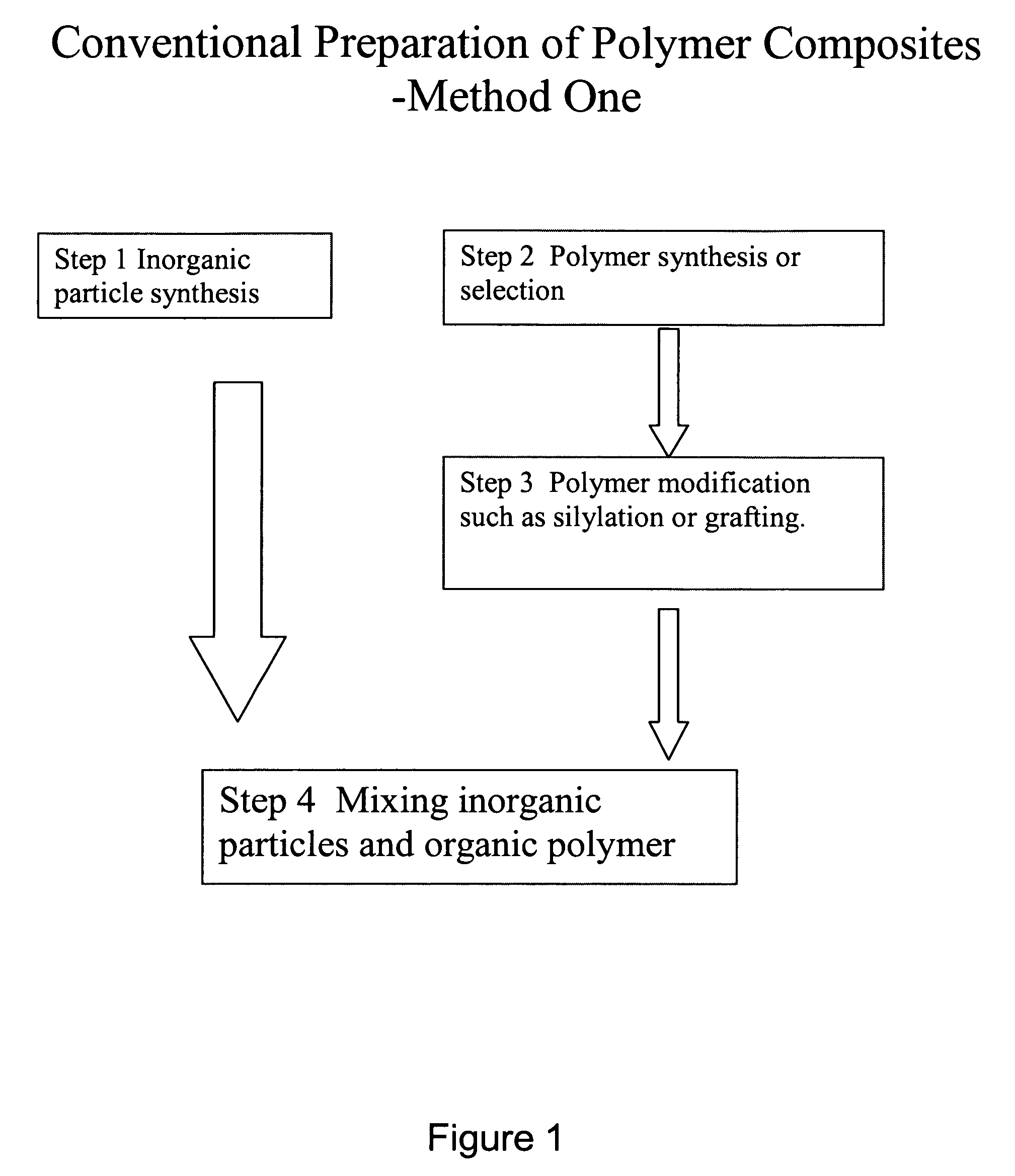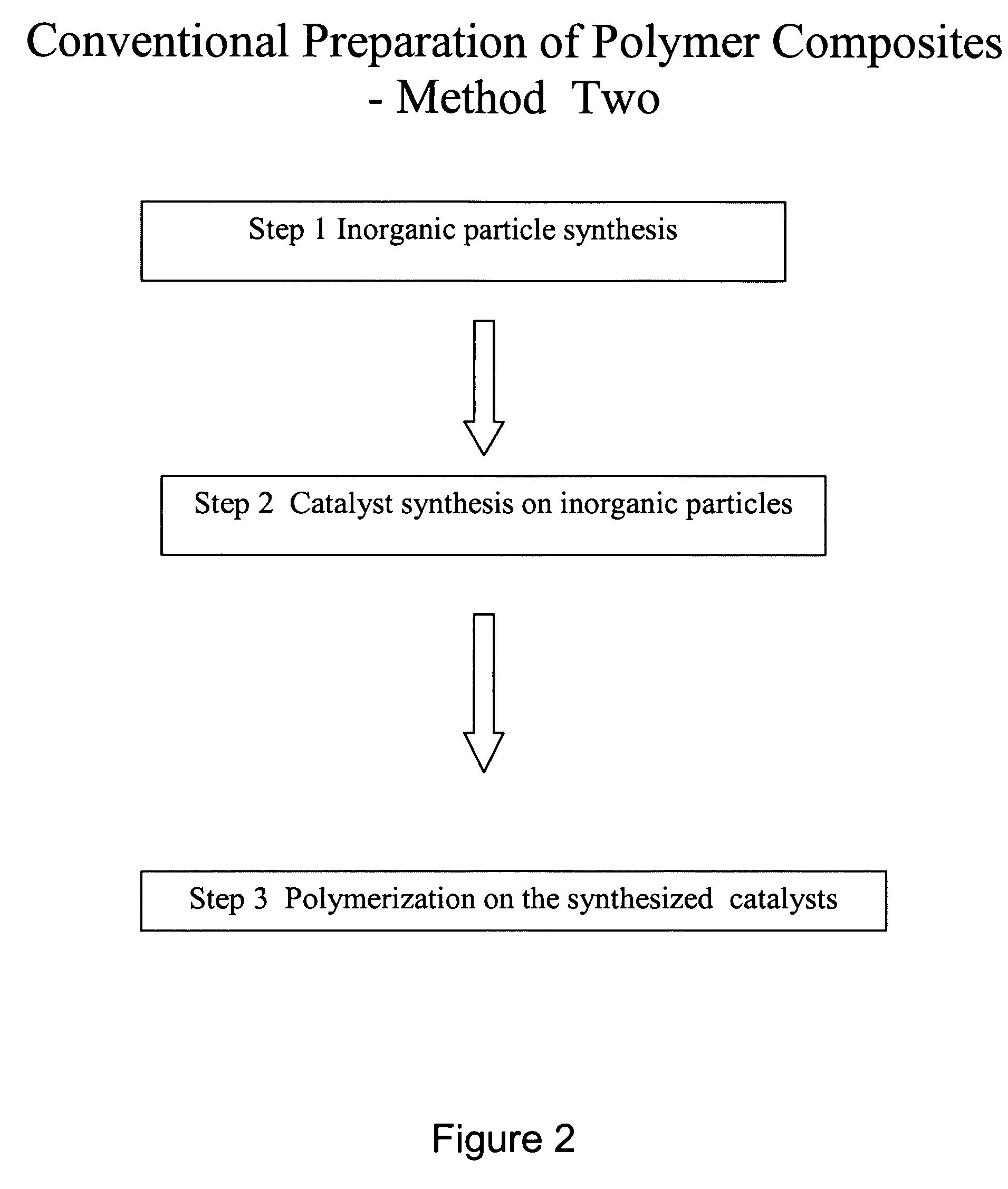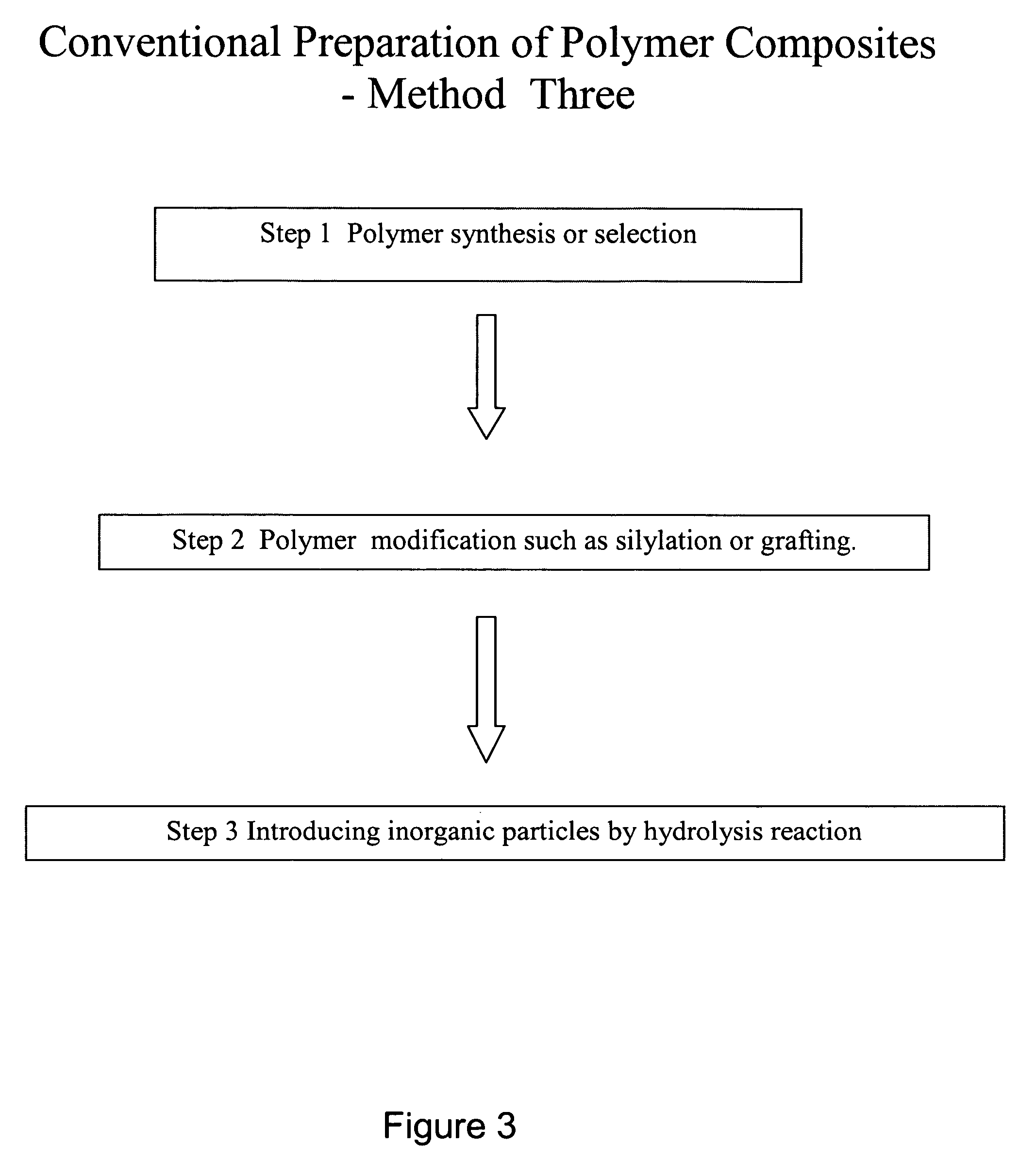Polymer composite synthesis in supercritical fluids
a supercritical fluid and composite synthesis technology, applied in the direction of synthetic resin layered products, water-setting substance layered products, chemical production, etc., can solve the problems of large changes in the morphology of the host polymer, limiting the lifetime, and high consumption of time, labor and cost. , to achieve the effect of reducing the amount of produced waste and process costs
- Summary
- Abstract
- Description
- Claims
- Application Information
AI Technical Summary
Benefits of technology
Problems solved by technology
Method used
Image
Examples
examples 1-4
[0086]These examples illustrate the hydrolysis of TEOS within polyethylene under supercritical CO2 at 35° C. under pressure P=3000 Psi. 1.0 g polyethylene, TEOS and acetic acid are introduced into the autoclave, and subsequently purged with ethylene to remove air. Then compressed CO2 was introduced into the autoclave and the reactor was heated to 35° C. Compressed CO2 was continually added into the autoclave to reach the desired pressure at 3000 Psi. The system was run for 24 hrs. After the reaction, the autoclave was cooled down and the compressed CO2 was vented out. The collected sample was washed by methanol and dried in a vacuum oven at room temperature. The melting temperature of these synthesized samples (PESi01-04) are summarized in Table 1. FTIR results of the synthesized samples from examples 1, 2, 3 are displayed in FIG. 7, which illustrates the silica glass formed within the matrix of polyethylene.
example 5
[0087]This example illustrates the hydrolysis of TMOS within polyethylene under supercritical CO2 at 35° C. at a pressure P=3000 Psi. 1.0 g polyethylene, TMOS and acetic acid were introduced into the autoclave, subsequently purged with ethylene to remove air. Then compressed CO2 was introduced into the autoclave and heating started to reach 35° C. Compressed CO2 was continually added into the autoclave to reach a pressure of 3000 Psi. Afterwards, the system was run for 24 hrs. After the reaction, the autoclave was cooled down and the compressed CO2 was vented out. The collected sample was washed by methanol and dried in a vacuum oven at room temperature. The melting temperature of this synthesized sample (PESiO5) is summarized in Table 1.
examples 6-8
[0088]These examples illustrate the hydrolysis of TEOS within polyethylene in supercritical CO2 at 60° C. at a pressure P=3000 Psi. 1.0 g PE, TEOS and acetic acid were introduced into the autoclave, subsequently purged with ethylene to remove air. Then the compressed CO2 was introduced to the autoclave and heating raised to 60° C. Compressed CO2 was continually added into the autoclave to reach a pressure at 3000 Psi. Afterwards, the system was run for 24 hrs. After the reaction, the autoclave was cooled down and the compressed CO2 was vented out. The collected sample was washed by methanol and dried in a vacuum oven at room temperature. The melting temperatures of these synthesized samples are summarized in Table 1. FTIR results of the synthesized samples from examples 6, 7, 8 are displayed in FIG. 8, which show the silica glass formed within the matrix of polyethylene.
[0089]The dispersion of the formed silica gel particles for samples from examples 6, 7 and 8 is depicted in FIG. 9...
PUM
| Property | Measurement | Unit |
|---|---|---|
| temperature | aaaaa | aaaaa |
| temperature | aaaaa | aaaaa |
| temperature | aaaaa | aaaaa |
Abstract
Description
Claims
Application Information
 Login to View More
Login to View More - R&D
- Intellectual Property
- Life Sciences
- Materials
- Tech Scout
- Unparalleled Data Quality
- Higher Quality Content
- 60% Fewer Hallucinations
Browse by: Latest US Patents, China's latest patents, Technical Efficacy Thesaurus, Application Domain, Technology Topic, Popular Technical Reports.
© 2025 PatSnap. All rights reserved.Legal|Privacy policy|Modern Slavery Act Transparency Statement|Sitemap|About US| Contact US: help@patsnap.com



